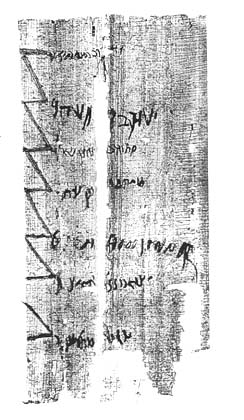Image Details

Joseph Aviram/Hebrew University and the Israel Exploration Society
Multiethnic signatures on the back of a document conceding property rights to Babatha’s stepdaughter, Shelamzion, reveal the region’s high level of cultural fluidity in the early second century C.E. (Babatha’s documents date from 94 to 132 C.E.) The first four witnesses wrote in Aramaic, the fifth in Greek and the final two in Nabatean. Judging from the documents in Babatha’s archive, members of the different ethnicities intermingled peacefully, participating in each other’s lives and cooperating with the Roman government in their legal dealings.
